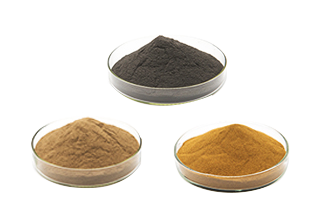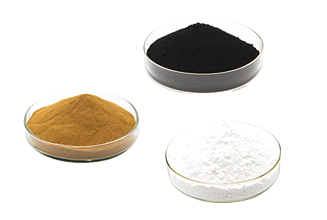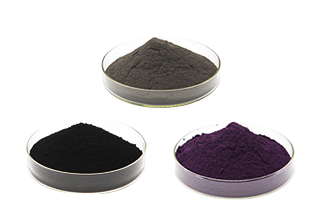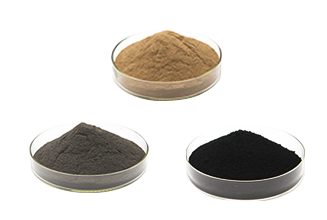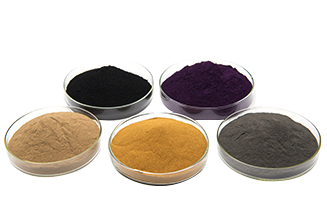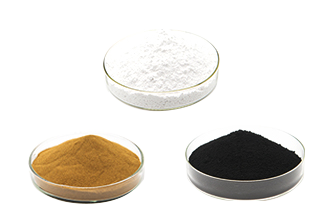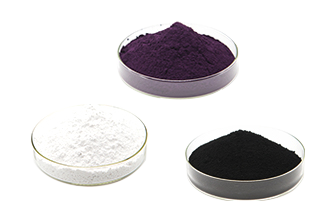Ultra-high temperature materials
1 Introduction
With the rapid development of aerospace technology and the urgent need to achieve aerospace integration, aerospace vehicles have become the focus of development in many countries' aerospace departments in recent years. In extreme environments such as long-term hypersonic cruise, transatmospheric flight, and atmospheric reentry, key parts such as the leading edge of the spacecraft wing and the nose cone and the atmosphere are violently rubbed against the atmosphere, generating extremely high temperatures, such as the wing in the Falcon project The stagnation area temperature of the leading edge exceeds 2000 ℃. Rocket nozzle openings, air-enhanced propulsion systems and engine intakes are subjected to high thermal and mechanical loads during flight, which will also directly affect the safety of the aircraft's thermal protection system . At present, in the harsh oxidizing convection environment, very few materials can maintain structural and dimensional integrity. Therefore, the design and preparation of thermal protection materials that have good oxidation resistance, ablation resistance, thermal shock resistance and maintain sufficient high temperature strength have become a key technical problem that new aerospace vehicles need to solve urgently. Due to its high melting point, high specific strength, high thermal conductivity, high electrical conductivity, corrosion resistance and good chemical stability, ultra-high temperature materials have become the first choice for thermal protection systems of aircraft in extreme environments. At present, commonly used ultra-high temperature materials include refractory metals and their alloys, C/C composite materials, and ultra-high temperature ceramic materials. This article mainly introduces the research progress and applications of ultra-high temperature materials in recent years, and also looks forward to the main research goals and key development directions of ultra-high temperature materials in the future.
2 Refractory metals and their alloys
Among refractory metals, C/C composite materials and ultra-high temperature ceramic materials, refractory metals are the first ultra-high temperature materials to be studied and applied.
Compared with other refractory metals, tungsten (W) has the highest melting point, has better oxidation resistance, thermal shock resistance, and higher ablation and erosion resistance. It is used in key components such as engine throat linings. However, tungsten (W) has a relatively high density (19.3 g/cm3), low specific strength, and is brittle at low temperatures, which will greatly reduce its strength and limit its wide application in other parts of aircraft. Many studies have shown that [3], in order to reduce the weight of pure tungsten (W) structural materials and improve the mechanical properties of tungsten (W), copper (Cu) can be infiltrated into tungsten (W) parts, and copper (Cu) volatilization zone Dissipate heat and reduce the surface temperature of tungsten (W). On this basis, thorium oxide (ThO2), hafnium carbide (HfC), and zirconium carbide (ZrC) are added to significantly improve the strength and thermal shock resistance of the tungsten alloy. In addition, the plasticity and strength of tungsten can be improved by adding rhenium (Re), thereby reducing the brittle transition temperature, increasing the recrystallization temperature, and increasing thermal fatigue resistance and thermal shock resistance.
Compared with tungsten (W), molybdenum (Mo) has lower melting point, density and cost, and molybdenum (Mo) silicides (such as MoSi2) have better oxidation resistance, and the use temperature can reach 1700 ℃. At present, the operating temperature of intermetallic compounds is generally only 900 ~ 1100 ℃, which is far from the ultra-high temperature range. The operating temperature of molybdenum silicide (MoSi2) has exceeded 1600 ℃, and it has good high temperature oxidation resistance and low density. (6.24 g/cm3), good thermal and electrical conductivity. Molybdenum (Mo) can also form a ternary intermetallic compound with extremely high high temperature strength with silicon (Si) and boron (B). For example, the yield strength of Mo-8.5Si-13.2B at 1500°C is still above 1 GPa. Compared with other refractory metal-based or ceramic-based materials used in high-temperature structures, it has a wide range of application prospects. However, molybdenum silicide (MoSi2) is an intermetallic compound with a C11b crystal structure, and its shortcomings such as low ductility restrict its application. In order to solve the defects of molybdenum silicide (MoSi2) in creep resistance and poor toughness, silicon carbide (SiC) is generally used as a reinforcing material and applied to molybdenum silicide (MoSi2) in the form of composite materials.
Refractory metals and their alloys are used as ultra-high temperature materials and have unique advantages, such as good plasticity, high toughness, and high temperature resistance. However, due to the problems of poor oxidation resistance, fewer resources, and high cost, it has limited its development and wider application as an ultra-high temperature material. However, rhenium (Re) has good compatibility with other refractory metals and ceramics (such as HfO2, HfC, NbC, TaC and ZrC, etc.), and through the combination of rhenium (Re) and other refractory metals and ceramic components Reasonable design and composition of composite materials can greatly improve the strength, creep resistance and environmental factor resistance of rhenium (Re). This is also an important direction for future research and development of refractory metals and their alloys.
3 C/C composite material
Carbon fiber reinforced carbon matrix composite material (C/C composite material for short) is a new type of ultra-high temperature thermal structure material. C/C composite materials have a series of excellent properties, such as low density, high specific strength, high specific modulus, low expansion coefficient, high thermal conductivity, ablation resistance and good thermal shock resistance. Carbon fiber is a special fiber composed of carbon elements. It is a kind of high melting point material. It is soft in texture and can be processed into various fabrics. It shows high strength along the fiber axis. The mechanical properties of carbon fiber increase with the use of temperature, which is not available in other ceramic fibers, especially in the ultra-high temperature environment (1000 ~ 2000 ℃), C/C composite materials still have excellent mechanical properties. In C/C composites, carbon matrix and carbon fiber can achieve ideal interface bonding, which is represented as a mechanical continuum rather than a chemical continuum. Since the thermal expansion coefficients of the two are almost the same, there will be no residual thermal stress at the interface due to temperature changes during the pyrolysis process, which greatly expands the application space of C/C composites.
4 Ultra-high temperature ceramics
Ultra-high temperature ceramic refers to a special material that can maintain physical and chemical stability in a high temperature environment (2000 ℃) and in a reaction atmosphere (for example, in an atomic oxygen environment). It has excellent high temperature mechanical properties and high temperature oxidation resistance. And thermal shock resistance ceramic matrix composite materials. Ultra-high temperature ceramics are mainly composed of high melting point borides and carbides, including hafnium boride (HfB2), zirconium boride (ZrB2), hafnium carbide (HfC), zirconium carbide (ZrC), tantalum carbide (TaC), etc. The melting points of boride and carbide ultra-high temperature ceramics exceed 3000 ℃, and they have excellent thermochemical stability and excellent physical properties, including high elastic modulus, high hardness, low saturated vapor pressure, moderate thermal expansion rate and good heat resistance Vibration performance, etc., and can maintain high strength at high temperatures. Ultra-high temperature ceramics can adapt to extreme environments such as ultra-high sonic long-term flight, atmospheric reentry, transatmospheric flight and rocket propulsion systems, and can be applied to various key components such as aircraft nose cones, wing leading edges, and engine hot ends. As an important material used in aerospace vehicles, ultra-high temperature ceramic materials have received great attention from all countries.
With the rapid development of aerospace technology and the urgent need to achieve aerospace integration, aerospace vehicles have become the focus of development in many countries' aerospace departments in recent years. In extreme environments such as long-term hypersonic cruise, transatmospheric flight, and atmospheric reentry, key parts such as the leading edge of the spacecraft wing and the nose cone and the atmosphere are violently rubbed against the atmosphere, generating extremely high temperatures, such as the wing in the Falcon project The stagnation area temperature of the leading edge exceeds 2000 ℃. Rocket nozzle openings, air-enhanced propulsion systems and engine intakes are subjected to high thermal and mechanical loads during flight, which will also directly affect the safety of the aircraft's thermal protection system . At present, in the harsh oxidizing convection environment, very few materials can maintain structural and dimensional integrity. Therefore, the design and preparation of thermal protection materials that have good oxidation resistance, ablation resistance, thermal shock resistance and maintain sufficient high temperature strength have become a key technical problem that new aerospace vehicles need to solve urgently. Due to its high melting point, high specific strength, high thermal conductivity, high electrical conductivity, corrosion resistance and good chemical stability, ultra-high temperature materials have become the first choice for thermal protection systems of aircraft in extreme environments. At present, commonly used ultra-high temperature materials include refractory metals and their alloys, C/C composite materials, and ultra-high temperature ceramic materials. This article mainly introduces the research progress and applications of ultra-high temperature materials in recent years, and also looks forward to the main research goals and key development directions of ultra-high temperature materials in the future.
2 Refractory metals and their alloys
Among refractory metals, C/C composite materials and ultra-high temperature ceramic materials, refractory metals are the first ultra-high temperature materials to be studied and applied.
Compared with other refractory metals, tungsten (W) has the highest melting point, has better oxidation resistance, thermal shock resistance, and higher ablation and erosion resistance. It is used in key components such as engine throat linings. However, tungsten (W) has a relatively high density (19.3 g/cm3), low specific strength, and is brittle at low temperatures, which will greatly reduce its strength and limit its wide application in other parts of aircraft. Many studies have shown that [3], in order to reduce the weight of pure tungsten (W) structural materials and improve the mechanical properties of tungsten (W), copper (Cu) can be infiltrated into tungsten (W) parts, and copper (Cu) volatilization zone Dissipate heat and reduce the surface temperature of tungsten (W). On this basis, thorium oxide (ThO2), hafnium carbide (HfC), and zirconium carbide (ZrC) are added to significantly improve the strength and thermal shock resistance of the tungsten alloy. In addition, the plasticity and strength of tungsten can be improved by adding rhenium (Re), thereby reducing the brittle transition temperature, increasing the recrystallization temperature, and increasing thermal fatigue resistance and thermal shock resistance.
Compared with tungsten (W), molybdenum (Mo) has lower melting point, density and cost, and molybdenum (Mo) silicides (such as MoSi2) have better oxidation resistance, and the use temperature can reach 1700 ℃. At present, the operating temperature of intermetallic compounds is generally only 900 ~ 1100 ℃, which is far from the ultra-high temperature range. The operating temperature of molybdenum silicide (MoSi2) has exceeded 1600 ℃, and it has good high temperature oxidation resistance and low density. (6.24 g/cm3), good thermal and electrical conductivity. Molybdenum (Mo) can also form a ternary intermetallic compound with extremely high high temperature strength with silicon (Si) and boron (B). For example, the yield strength of Mo-8.5Si-13.2B at 1500°C is still above 1 GPa. Compared with other refractory metal-based or ceramic-based materials used in high-temperature structures, it has a wide range of application prospects. However, molybdenum silicide (MoSi2) is an intermetallic compound with a C11b crystal structure, and its shortcomings such as low ductility restrict its application. In order to solve the defects of molybdenum silicide (MoSi2) in creep resistance and poor toughness, silicon carbide (SiC) is generally used as a reinforcing material and applied to molybdenum silicide (MoSi2) in the form of composite materials.
Refractory metals and their alloys are used as ultra-high temperature materials and have unique advantages, such as good plasticity, high toughness, and high temperature resistance. However, due to the problems of poor oxidation resistance, fewer resources, and high cost, it has limited its development and wider application as an ultra-high temperature material. However, rhenium (Re) has good compatibility with other refractory metals and ceramics (such as HfO2, HfC, NbC, TaC and ZrC, etc.), and through the combination of rhenium (Re) and other refractory metals and ceramic components Reasonable design and composition of composite materials can greatly improve the strength, creep resistance and environmental factor resistance of rhenium (Re). This is also an important direction for future research and development of refractory metals and their alloys.
3 C/C composite material
Carbon fiber reinforced carbon matrix composite material (C/C composite material for short) is a new type of ultra-high temperature thermal structure material. C/C composite materials have a series of excellent properties, such as low density, high specific strength, high specific modulus, low expansion coefficient, high thermal conductivity, ablation resistance and good thermal shock resistance. Carbon fiber is a special fiber composed of carbon elements. It is a kind of high melting point material. It is soft in texture and can be processed into various fabrics. It shows high strength along the fiber axis. The mechanical properties of carbon fiber increase with the use of temperature, which is not available in other ceramic fibers, especially in the ultra-high temperature environment (1000 ~ 2000 ℃), C/C composite materials still have excellent mechanical properties. In C/C composites, carbon matrix and carbon fiber can achieve ideal interface bonding, which is represented as a mechanical continuum rather than a chemical continuum. Since the thermal expansion coefficients of the two are almost the same, there will be no residual thermal stress at the interface due to temperature changes during the pyrolysis process, which greatly expands the application space of C/C composites.
4 Ultra-high temperature ceramics
Ultra-high temperature ceramic refers to a special material that can maintain physical and chemical stability in a high temperature environment (2000 ℃) and in a reaction atmosphere (for example, in an atomic oxygen environment). It has excellent high temperature mechanical properties and high temperature oxidation resistance. And thermal shock resistance ceramic matrix composite materials. Ultra-high temperature ceramics are mainly composed of high melting point borides and carbides, including hafnium boride (HfB2), zirconium boride (ZrB2), hafnium carbide (HfC), zirconium carbide (ZrC), tantalum carbide (TaC), etc. The melting points of boride and carbide ultra-high temperature ceramics exceed 3000 ℃, and they have excellent thermochemical stability and excellent physical properties, including high elastic modulus, high hardness, low saturated vapor pressure, moderate thermal expansion rate and good heat resistance Vibration performance, etc., and can maintain high strength at high temperatures. Ultra-high temperature ceramics can adapt to extreme environments such as ultra-high sonic long-term flight, atmospheric reentry, transatmospheric flight and rocket propulsion systems, and can be applied to various key components such as aircraft nose cones, wing leading edges, and engine hot ends. As an important material used in aerospace vehicles, ultra-high temperature ceramic materials have received great attention from all countries.
related news
-
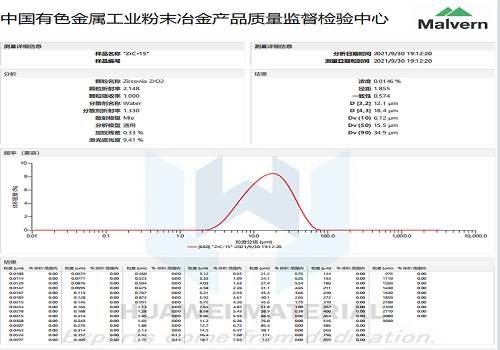 Jan 19, 2022Chemical vapor deposition of zirconium carbide coatings
Jan 19, 2022Chemical vapor deposition of zirconium carbide coatings -
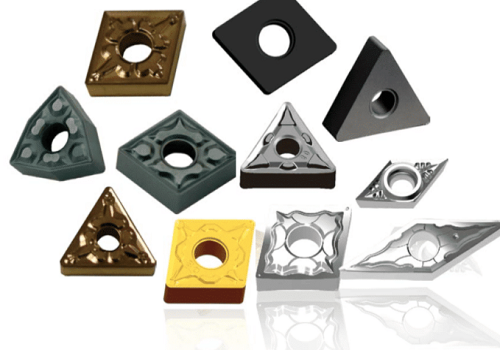 Jan 25, 2022Properties and applications of common carbides
Jan 25, 2022Properties and applications of common carbides -
.png) May 23, 2022Carbide ultra-high temperature ceramics have high melting point, high strength, high hardness and good chemical stability, and are widely used ultra-high temperature ceramic materials
May 23, 2022Carbide ultra-high temperature ceramics have high melting point, high strength, high hardness and good chemical stability, and are widely used ultra-high temperature ceramic materials -
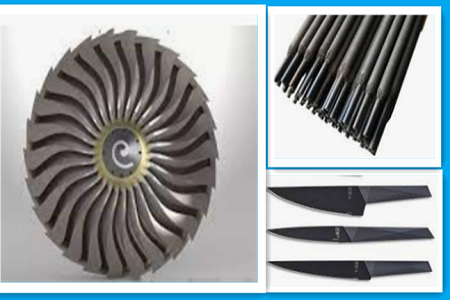 Nov 24, 2021Introduction to the application of titanium carbide (TiC)
Nov 24, 2021Introduction to the application of titanium carbide (TiC)

